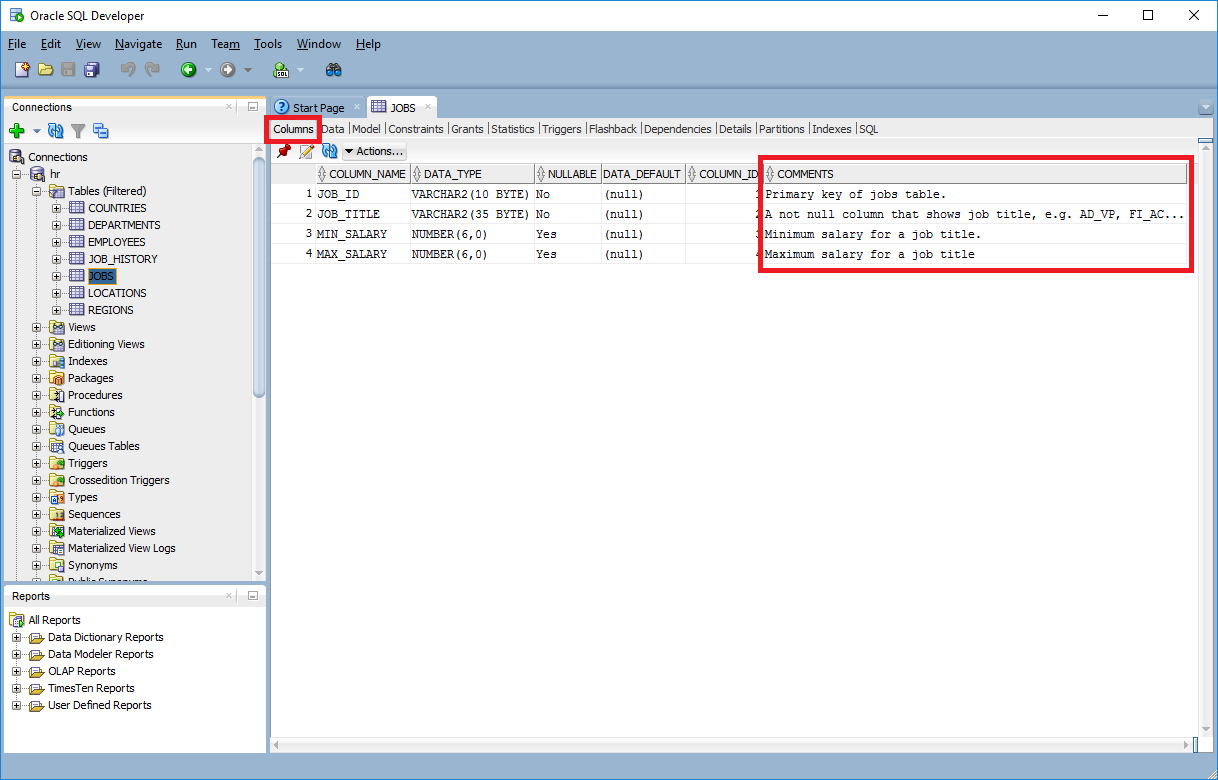

- ORACLE SQLEDITOR MAC OS X
- ORACLE SQLEDITOR INSTALL
- ORACLE SQLEDITOR FULL
- ORACLE SQLEDITOR CODE
- ORACLE SQLEDITOR PLUS
(Or use the drop-down arrow to specify a tab view.) (Or use the drop-down arrow to specify a tab view.)įorward moves to the pane after the current one in the list of visited panes. If you do not use the drop-down arrow to specify the database connection to use, you are asked to select a connection.īack moves to the pane that you most recently visited. Open SQL Worksheet opens the SQL Worksheet (see Using the SQL Worksheet). Save All saves any changes to all open objects. Save saves any changes to the currently selected object. Open opens a file (see Section 4.56, "Open File"). New creates a new a new database object (see Section 4.4, "Create/Edit New Object"). Icons under the menus perform the following actions: You can also display the File menu by pressing the F10 key.
ORACLE SQLEDITOR FULL
You can use shortcut keys to access menus and menu items: for example Alt+F for the File menu and Alt+E for the Edit menu or Alt+H, then Alt+S for Help, then Full Text Search.
ORACLE SQLEDITOR PLUS
The menus at the top contain standard entries, plus entries for features specific to SQL Developer (see Section 1.2.1, "Menus for SQL Developer"), as shown in the following figure. If you are using a version of SQL Developer that supports migration of third-party databases to Oracle, see also Section 2.13, "SQL Developer User Interface for Migration".

If you want to get started quickly with SQL Developer, do the short tutorial in Chapter 3, "Tutorial: Creating Objects for a Small Database", or work with your existing database objects. To create a new database connection, right-click the Connections node in the Connections navigator, select New Database Connection, and complete the required entries in the dialog box. If you want to become familiar with SQL Developer concepts before using the interface, read the rest of this chapter before proceeding to the next step.Ĭreate at least one database connection (or import some previously exported connections), so that you can view and work with database objects, use the SQL Worksheet, and use other features. For example, on a Windows system the path might have a name similar to C:\Program Files\Java\jdk1.5.0_06\bin\java.exe. If you are asked to enter the full pathname for java.exe, click Browse and find java.exe. On Windows systems, double-click sqldeveloper.exe.
ORACLE SQLEDITOR MAC OS X
On Linux and Mac OS X systems, run sh sqldeveloper.sh. To start SQL Developer, go to the sqldeveloper directory under the directory, and do one of the following: It also causes many files and folders to be placed in and under that directory. Unzipping the SQL Developer kit causes a directory named sqldeveloper to be created under the directory. This directory location will be referred to as. Unzip the SQL Developer kit into a directory (folder) of your choice. After you have read the installation guide, the basic steps are: You should read the Oracle Database SQL Developer Installation Guide before you perform the installation.
ORACLE SQLEDITOR INSTALL
To install and start SQL Developer, you simply download a ZIP file and unzip it into a desired parent directory or folder, and then type a command or double-click a file name. Section 1.13, "Location of User-Related Information"Ĭhapter 2, "Migrating Third-Party Databases" (if you are using a SQL Developer version that supports migration)Ĭhapter 3, "Tutorial: Creating Objects for a Small Database"ġ.1 Installing and Getting Started with SQL Developer Section 1.12, "SQL Developer Preferences" Section 1.10, "Using DB Object Search to Find Database Objects"
ORACLE SQLEDITOR CODE
Section 1.9, "Using Snippets to Insert Code Fragments" Section 1.6, "Running and Debugging Functions and Procedures" Section 1.5, "Entering and Modifying Data" Section 1.2, "SQL Developer User Interface" Section 1.1, "Installing and Getting Started with SQL Developer" This chapter contains the following major sections: You can also connect to schemas for selected third-party (non-Oracle) databases, such as MySQL, Microsoft SQL Server, and Microsoft Access, and you can view metadata and data in these databases. Once connected, you can perform operations on objects in the database. You can connect to any target Oracle database schema using standard Oracle database authentication. You can browse, create, edit, and delete (drop) database objects run SQL statements and scripts edit and debug PL/SQL code manipulate and export data and view and create reports. Oracle SQL Developer is a graphical version of SQL*Plus that gives database developers a convenient way to perform basic tasks. The script content on this page is for navigation purposes only and does not alter the content in any way.


 0 kommentar(er)
0 kommentar(er)
